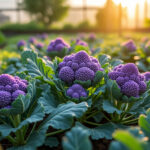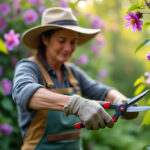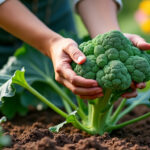As temperatures rise and spring arrives, many gardening enthusiasts eagerly anticipate the moment they can plant their tomatoes. Timing is crucial when it comes to ensuring the best possible harvest of these beloved fruits. This guide will walk you through the essential factors to consider for planting tomatoes, including climate conditions, soil temperature, and practical tips to cultivate a successful garden.
Understanding the importance of timing for tomato planting
Every gardener knows that the joy of harvesting a sun-ripened, flavorful tomato is unparalleled. However, achieving this bounty revolves around precise timing. Planting tomatoes too early can expose them to late frosts, while delaying planting could mean losing the chance for peak flavor in your fruits. By comprehending the basics of tomato growth and the factors influencing optimal planting time, you can maximize your garden’s potential.
Core requirements for growing tomatoes
Tomatoes are warm-weather lovers, thriving with ample sunlight and consistent moisture, yet they are quite susceptible to cold temperatures. Key factors for successful tomato growth include:
- Temperature: Aim for daytime temperatures between 70°F and 85°F. Nighttime temperatures should not drop below 50°F.
- Sunlight: Ensure your plants receive at least 6-8 hours of direct sunlight per day.
- Soil Type: Use nutrient-dense, well-drained soil with a pH range of 6.0 to 6.8 for best results.
- Watering Needs: Maintain consistent moisture without over-saturating the soil.
Implementing these foundational elements creates a thriving environment for your tomatoes.
When should you plant tomatoes? Key timelines to follow
Configuring the right timing for planting tomatoes is essential, largely influenced by your regional frost dates and soil conditions.
Evaluating last frost dates
Tomatoes can’t tolerate frost, so it’s vital to plant them only after the last frost has passed. Follow these steps to identify the perfect planting window:
- Research Local Frost Dates: Check resources like the USDA’s Plant Hardiness Zone Map for your area’s average last frost date.
- Plant following the Frost: Typically, the ideal planting period spans from late April to mid-May, but localized information will yield the most accuracy.
Once frost risks are eliminated, you can confidently start planting.
Soil temperature: The foundation of successful root establishment
Warm soil is crucial for strong tomato roots. The ideal temperature should be at least 60°F. You can follow these steps for monitoring soil conditions:
- Measure Soil Temperature: Employ a soil thermometer to gauge conditions in the morning. If it consistently reads 60°F or higher, it’s time to plant.
- Utilize Raised Beds and Black Plastic: Elevating your planting beds or using black plastic can help retain warmth, encouraging better soil temperatures.
Starting seeds indoors for early success
If you’re eager to get a head start, consider germinating tomato seeds indoors about 6-8 weeks before the final frost is forecast. Well-established seedlings provide a jumpstart in the growing season.
Indoor seed starting process
Follow these easy steps for effective indoor germination:
- Fill Seed Trays: Fill trays with seed-starting mix and plant seeds about 1/4 inch deep.
- Provide Adequate Light: Use grow lights or place the trays near sunny windows for 12-16 hours of illumination daily.
- Maintain Optimal Warmth: Keep room temperatures around 70°F to encourage germination.
- Thin and Transplant: Once seedlings develop a couple of sets of leaves, thin them to retain only the strongest plants.
Remember to introduce your seedlings to outdoor conditions gradually to prepare them for transplanting.
Key considerations for outdoor planting
Once you’ve reached your last frost date, soil warmth is suitable, and your seedlings are acclimated, it’s time to plant outdoors.
Proper spacing and planting depth
Tomatoes require ample space to flourish:
- Spacing: Keep plants about 24-36 inches apart to promote airflow and growth.
- Depth: Plant tomatoes deeper than most crops—up to two-thirds of the stem can be buried, which helps establish a powerful root system.
Implementing support structures
To help tomato plants remain upright, support structures like cages, stakes, or trellises should be installed during planting:
- Use Tomato Cages or Stakes: Add a cage around each plant or use stakes for support.
- Train the Plants: Guide branches gently to encourage growth within the support.
Regional planting timings for tomatoes
Understanding the best planting times varies by location:
| Region | Optimal Planting Period | Recommended Varieties |
|---|---|---|
| Northern U.S. | Late May to early June | Cherry or Roma |
| Southern U.S. | March to early April | Heirloom varieties |
| Midwest U.S. | Mid-to-late May | Biffsteak tomatoes |
When to plant onion sets for the best harvest results
Tips for nurturing your tomato plants
While planting is critical, caring for your tomato plants will ensure a high yield during the growing season. Follow these strategies for a flourishing harvest:
Effective watering practices
Moisture control is vital for healthy growth:
- Water at the Base: Aim to water directly at the base of the plant to prevent leaf diseases.
- Deep Watering: Water thoroughly, providing about 1-2 inches weekly, taking rainfall into account.
Fertilization techniques
Tomatoes are heavy feeders that require nutrients to produce fruits:
- Balanced Fertilizer: Use a general-purpose fertilizer when planting, then switch to a phosphorus-rich formula once fruiting starts.
- Avoid Over-Fertilization: Excess nitrogen can lead to lots of foliage but fewer fruits, so be mindful of how much you apply.
Pruning and mulching methods
Ground maintenance plays a key role in promoting healthy air circulation:
- Prune Suckers: Remove small shoots that sprout between branches to prioritize fruit growth.
- Apply Mulch: Spread 2-3 inches of mulch around plants to retain moisture and suppress weed growth.
FAQ
1. Can I grow tomatoes in containers?
Yes! Select a large container (at least 5 gallons) and high-quality potting mix. Container tomatoes may need more frequent watering than those planted in garden beds.
2. How do I protect my tomatoes from an unexpected frost?
Cover your plants with frost cloths or blankets during cooler nights, removing them during the day for sunlight.
3. What is the best way to prevent tomato diseases?
Ensure good airflow, space plants appropriately, and water at the base to avoid moisture on leaves. Crop rotation is also essential to mitigate soil-borne diseases.
4. Can I start tomatoes from seeds outdoors?
This is possible in warmer climates, but starting seeds indoors generally yields more robust plants.
5. When can I expect my tomatoes to ripen?
Depending on the variety, tomatoes will typically start ripening 60-80 days after transplanting, with quicker ripening for cherry tomatoes compared to larger varieties.
















